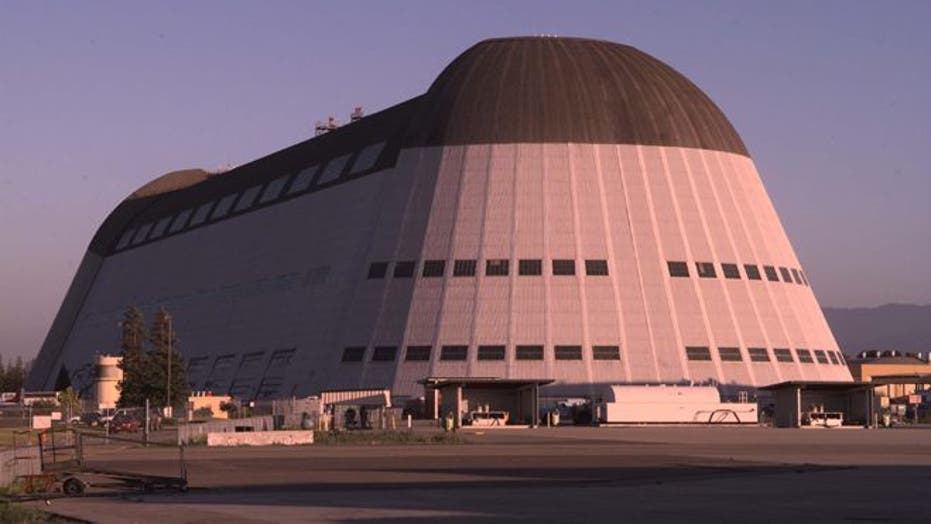The space agency has an unusual problem: space.
A recent review of NASA’s land holdings on earth revealed a new challenge for the agency: poorly maintained, aging facilities once used for research and development or space vehicle construction, now essentially useless.
NASA spends about $1.1 billion annually on maintenance and upkeep of its more than 5,400 buildings, landing strips and other unique sites; but approximately 9 percent of its real property assets aren’t being used, NASA told FoxNews.com. The solution, according to the Office of the Inspector General (OIG): lease them.
Kennedy leases a clean room where Apollo capsules were readied 40 years ago to Lockheed Martin. Boeing is building space taxis in a processing hangar where shuttles were once routinely readied to soar. And there are plenty of others, from Rolls-Royce and Google to local schools and, in areas where businesses aren’t interested, parks, gardens and visitor centers.
But not enough, according to Paul K. Martin, NASA Inspector General.
“Few incentives exist for NASA to identify underutilized property as unnecessary to its mission needs,” he concluded in the August report.
Olga Dominguez, NASA’s assistant administrator for the office of strategic infrastructure, agreed that the agency wasn’t 100 percent sure how many buildings and facilities were unusued. Part of the challenge, she said, was the changing nature of the space agency’s mission. As NASA has refocused from the space shuttle to the private space industry, its needs have changed as well.
“Because our mission has gone through such extensive changes, all of these new programs -- commercial crew, commercial space -- all of these have different requirements,” she told FoxNews.com. “So the space needs have changes every year.”
“Right now, well we think we might need [a facility] and then seven months later, no we don’t.”
NASA is the ninth largest land owner in the federal government, with more than 100,000 acres that occupy 44 million square feet and are estimated to cost $29 billion to replace.
Over 80 percent of these facilities are 40 years old or more, however, and NASA faces a backlog of deferred maintenance totaling $2.5 billion. The NASA Authorization Act of 2010 requires the agency to eliminate property for which it has no current use -- but what of unique properties it may someday need again?
The best solution for many such cases, according to Martin, is to lease those moldering facilities out. That’s easier said than done, however.
“I have a lot of facilities that we, NASA, no longer need,” Robert Cabana, NASA Kennedy Space Center director and a four-time space shuttle flier, told the Washington Post in February. “I don’t have the money to maintain them, I don’t have the money to tear them down. They’re just going to sit and rot.”
Cabana was frustrated with NASA administration’s inability to adapt, explained Joyce Riquelme, director of center planning and development directorate at Kennedy.
“We do have facilities that are unused or underutilized as a result of the shuttle program shutting down,” she told FoxNews.com.
'I don’t have the money to maintain them, I don’t have the money to tear them down. They’re just going to sit and rot.'
But thanks to current deals and new agreements -- with nano-satellite firm Micro Aerospace Solutions, engineering company Special Aerospace Services and others -- Kennedy is right-sizing.
“We’re really making good progress,” Riquelme said.
As of September 2011, NASA had 430 leasing agreements of various types at 9 of its 10 centers.
- The Navy uses buildings and land at Stennis Space Center.
- Airship Ventures uses 24,000 square feet of space at Ames’ Moffett Field to store a rigid airship.
- Google leases 42.2 acres at Ames as well, planning up to 1.2 million square feet of offices and R&D space.
- Rolls-Royce has office space and engine test facilities at Stennis.
Yet the agency is having a hard time finding tenants, partly because NASA relies heavily on word of mouth. According to the OIG report, that just isn’t working.
A prime example is Hangar One, a Silicon Valley landmark built in the 30s and one of the world’s largest free-standing structures. In April, NASA said it was working to dispose of it.
Leasing Hangar One is illegal, according to current policy, since there’s no immediate need for the vast space. Yet selling it would be a dire hit to Silicon Valley and even national security, many warn.
“The very vitality and future of NASA Ames as a center is at risk,” the Silicon Valley Leadership Group said in May.
The facility is currently being cleaned up by the original tenant, the Navy, according to Scott Anderson, environmental coordinator for the former Naval Air Station. In mid-November, NASA will take over again -- but what happens then is anyone’s guess.
“NASA is responsible for residing the hangar, paying for the cost to reside the hangar, and making any additional upgrades and repairs necessary to prepare the hangar for reuse,” Anderson told FoxNews.com.
Google -- one of the largest tenants of NASA properties -- has offered to pay for tens of millions for that work and to rent the structure through H211 LLC, a private plane operator linked to the search giant.
The status of that offer is unclear.
“NASA has made improvements to its leasing program in recent years,” Martin wrote in his report. Riquelme agreed that headway was, at last, being made.
“In the next three to four months, you’ll see several interesting things come out that will show progress,” she told FoxNews.com.

